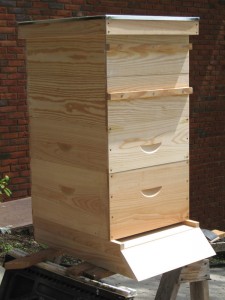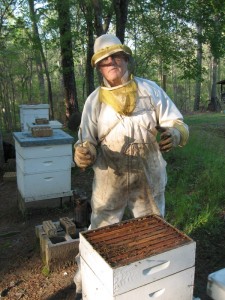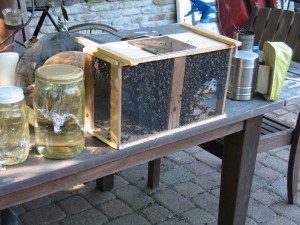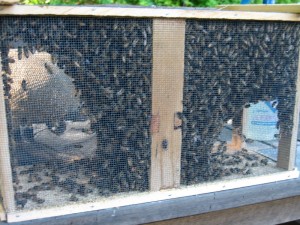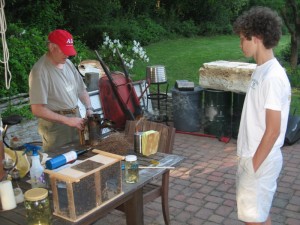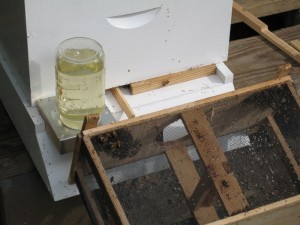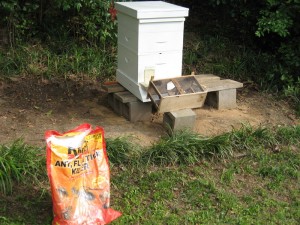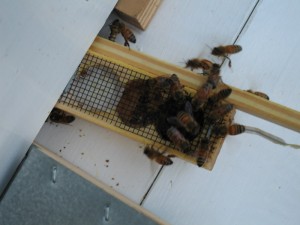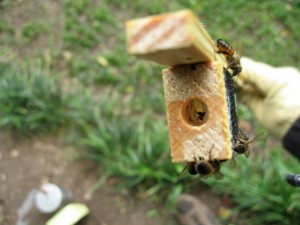My friend and colleague Dr. John Hurst got me thinking about being a beekeeper, so I read a few books about beekeeping, bought a hive kit, joined the local beekeeping society, and ordered a package of bees. Here is my hive. I made the two upper boxes from scrap lumber (southern yellow pine), the rest is cypress, from Rossman’s apiary. The main bee entrance is the slot below the boxes.
Next, a trip to my mentor’s apiary.
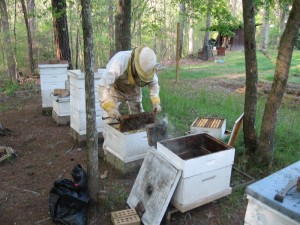
With all those bees buzzing around and moving all over the hives, I had to suppress the urge to run.
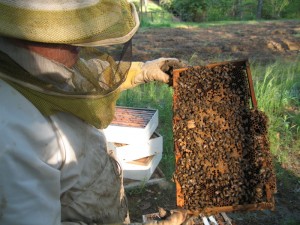
With all those bees buzzing around and moving all over the hives, I had to suppress the urge to run.
My package of bees arrived from south Alabama last Thursday. I kept them in the basement until Friday afternoon. Jars of syrup and my home-made bee smoker flank the box.
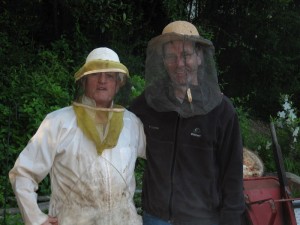
Time to load the bees in the hive. Dr. Hurst was kind enough to loan me a veil (which I am wearing backwards)
We poured the bees in the hive and put the queen box on a stick, sliding it under the brood box through the entrance. This allows for inspection of the queen without opening the hive (none of the bee books showed this, but it is an excellent technique).
We put the bee box in front of the hive entrance, hoping the rest of the bees would eventually enter the hive. The next morning, a few bees remain in the box and ants are entering the hive, no doubt attracted by the sugar water needed to feed the bees.
Some permethrin granules sprinkled on the ground and watered in took care of the ants. One must be careful about exposing bees to pesticides, as they are very sensitive.
Two days later, the queen has not yet escaped from her box. On the left is the “queen candy”, an white edible plug which the bees eat away to let the queen escape. The workers surround the queen (not visible on this photo), hopefully to welcome her into the hive. This process needs to occur over a period of a few days, or the workers will reject the queen and kill her.
Sugar water inside the upper box of the hive, suspended over the ventilation hole. The bees are draining both bottles of syrup through small perforations in the caps.
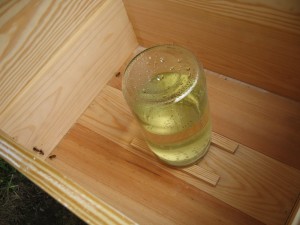
Sugar water inside the upper box of the hive, suspended over the ventilation hole. The bees are draining both bottles of syrup through small perforations in the caps.
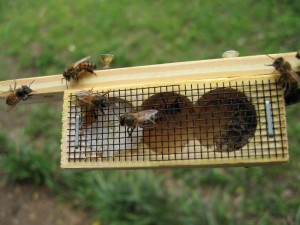
One week later, the queen has been released from her cage. It is apparent the plug has been eaten through.
Next step is to open the hive to see if the queen has begun laying eggs. It takes about three weeks before the new workers hatch, and the hive population will continue to dwindle until then, so it is important to confirm that the queen has survived (otherwise one must order a new queen and begin the acclimation process over again.) I’ll do this next week.

